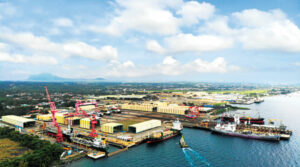Scientists urge strategic infrastructure in disputed sea

By Kyle Aristophere T. Atienza, Reporter
ANY infrastructure program for Philippine-occupied features in the South China Sea should be designed to make the country’s features habitable and conducive for scientific research, a group of scientists and engineers said.
The government should establish facilities that would give habitants and researchers access to sustainable energy and water, Jose Antonio Montalban, public information officer of Pro-People Engineers and Leaders (Propel), said in an email.
“[The budget] should be used on more crucial utilities and facilities such as energy generation and desalination plants to make longer stays in West Philippine Sea viable, while intending to improve patrolling measures for the security of the fisherfolks,” he said.
He cited the need to put up more off-grid energy facilities and desalination plants for seawater conversion “to promote civilian and commercial activities” within the country’s 200-nautical mile exclusive economic zone in the South China Sea.
“While facilities and structures for national defense and security are essential, we think that securing facilities and structures to optimize the use of primary necessities and public utilities should be ensured first,” Mr. Montalban said.
Infrastructure development for the West Philippine Sea (WPS) — a reference to areas of the South China Sea within the country’s 200-kilometer exclusive economic zone (EEZ) — was among the highlights of the proposed P5.768-trillion 2024 national budget ratified by Congress on Dec. 11.
Mr. Montalban said a massive infrastructure development program for the West Philippine Sea should be pursued without fully depending on foreign resources and technological capacity to boost the national economy and ensure that the country’s interests are protected.
“Massive building and infrastructure development in the WPS should be pursued using indigenous resources meant to address indigenous concerns in the areas, using technologies and methodologies that are also indigenous to us,” he said.
“We believe that the state and the Filipino people should have the full control on these infrastructures and facilities to preserve the national interest for national sovereignty and security,” he added.
Mr. Montalban said any government plans for Philippine features in the South China Sea should involve the Department of Science and Technology, the Department of Public Works and Highways, the Department of Environment and Natural Resources, and the Department of Agriculture.
Philippine military spokesperson, Medel Aguilar, had said that the Philippines is eyeing to build a permanent shelter for fisherfolk in the Second Thomas Shoal, which the Philippines call Ayungin.
He mentioned a civilian structure like a lighthouse or a marine scientific research center.
The idea has angered China, with Chinese foreign affairs ministry spokesperson Mao Ning reiterating their claim over the shoal and claiming that it’s an “uninhabited shoal.”
“According to the Declaration on the Conduct of Parties in the South China Sea (DoC) signed by China and ASEAN countries, parties should keep Ren’ai Jiao uninhabited and facility-free,” she said in a news conference in China.
The Second Thomas Shoal is about 200 kilometers from the Philippine island of Palawan and more than 1,000 kilometers from Hainan Island, China’s nearest major landmass.
“The involvement of science and technology for the modernization of WPS is indeed vital,” Propel said. “Utilities and facilities meant to secure civilian, commercial and defense purposes are crucial for the security of the constituents surrounding the West Philippine Sea.”




